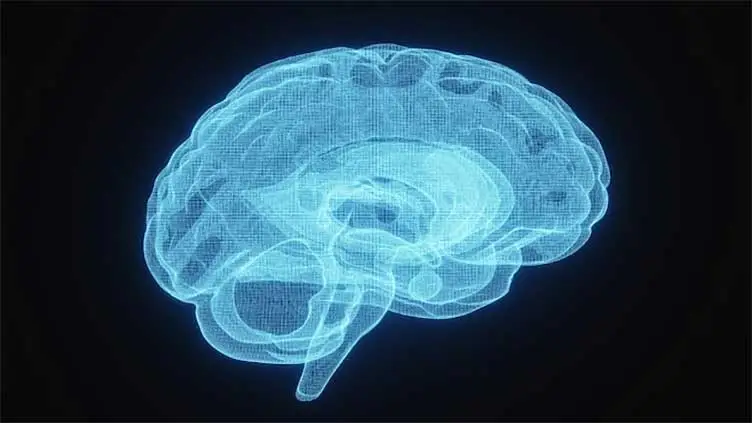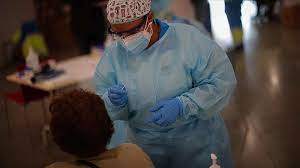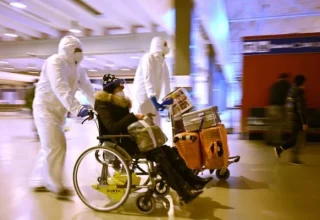
ISLAMABAD, Sep 26(ABC): Progressive supranuclear palsy is a rare condition that affects the brain. The condition is also called Steele-Richardson-Olszewski syndrome.
Progressive supranuclear palsy causes the brain cells that control movement and motor skills to deteriorate. As the condition progresses, problems with walking balance, walking, eye movement, and swallowing can occur.
There’s no cure for progressive supranuclear palsy, but treatment for the condition can help manage the symptoms.
Causes of progressive supranuclear palsy
It’s not clear what causes progressive supranuclear palsy, but researchers have found that people with supranuclear palsy have excess amounts of a protein called tau in their brains.
Clumps of excess tau cells are also found in people with conditions such as Alzheimer’s disease. Researchers aren’t sure what the link between this protein and brain cell deterioration is.
No other possible causes have been identified. There are some cases of progressive supranuclear palsy occurring more than once in the same family, but no genetic link has been found.
Most people who have progressive supranuclear palsy don’t have a family member with a condition.
The only known risk factor is age. People in their 60s and 70s are the most commonly diagnosed.
Early signs and symptoms of progressive supranuclear palsy (PSP)
In the early stage of progressive supranuclear palsy, symptoms can be mild and easy to dismiss. People experiencing these symptoms might think that they’re simply experiencing stress or getting poor sleep.
However, these symptoms can be signs of progressive supranuclear palsy. It’s always best to see a medical professional if you’ve had any symptoms for more than a week or two.
Early symptoms of progressive supranuclear palsy include:
• fatigue
• a stiff neck
• general muscle stiffness
• decreased tolerance for bright lights
• blurry vision
• irritability or mood shifts
• impaired judgment or recklessness
• difficulty controlling eye motions
• difficulty keeping balance
• repeated falls (often falling backward)
• involuntary shaking of limbs, hands, or feet (tremors)
• slowed down or awkward movements
Symptoms usually increase over time. There’s currently no cure for progressive supranuclear palsy, but treatment can help you manage your symptoms and remain independent longer.
Progressive supranuclear palsy vs. Parkinson’s disease
It’s common forTrusted Source progressive supranuclear palsy to be diagnosed as Parkinson’s disease. The two conditions share similar symptoms, especially in the early stage of supranuclear palsy. However, there are some significant differences.
For instance, although researchers have foundTrusted Source an excess protein buildup might be linked to both conditions, the protein tau is linked to PSP while the protein alpha-synuclein is linked to Parkinson’s.
Disease progression is also different. Progressive supranuclear palsy progresses much faster than Parkinson’s disease. It’s also less responsive to medications, such as levodopa, than Parkinson’s.
Additionally, people with progressive supranuclear palsy often have problems with speech and swallowing much earlier in the disease process, and those symptoms tend to be significantly more severe.
Stages and later symptoms of progressive supranuclear palsy (PSP)
Progressive supranuclear palsy has an early, mid, and late stage. Symptoms get worse as the stages advance and the disease progresses.
New symptoms in the mid-stage
In the mid-stage, symptoms from the early stage tend to get worse. New symptoms may also develop:
• slurred speech
• slowed speech
• reduced blinking leading to dry eyes
• difficulty sleeping
• eye twitching
• memory problems
• slowed thinking
• headaches
• neck pain
• back pain
• joint pain
Symptoms in the late stage of progressive supranuclear palsy
In the late stage, difficulties with speech, swallowing, and thinking increase. This can make it difficult for the person with progressive supranuclear palsy to care for themselves. For instance, difficulty with swallowing often means a feeding tube is required.
• speech that is hard for others to understand
• difficulty thinking
• difficulty concentrating
• increased memory problems
• loss of throat muscle control
• difficulty swallowing
• constipation
• difficulty passing urine
Treatment options for progressive supranuclear palsy (PSP)
Several treatments are available to help manage the symptoms and improve the quality of life for people with supranuclear palsy.
The exact treatment plan will depend on your symptoms, the severity, and on your response to treatment. Common treatments include:
• Parkinson’s disease medications: People with progressive supranuclear palsy are able to get some symptom relief from Parkison’s disease medications. However, this effect is limited and temporary. Most people are only about to take these medications for about 3 years.
• Specialty eyeglasses: Eyeglasses with bifocal or prism lenses can help people with supranuclear palsy who have less control over their eye muscles.
• Botox injections: Botox can help stop muscle spasms. It can be injected into the muscles around the eyes to help with vision and balance difficulties.
• Antidepressant medications: Antidepressant medications can help manage pain and mood symptoms.
• Physical therapy: Physical therapy can help improve muscle strength and balance.
• Occupational therapy: Occupational therapy can help you learn to use adaptive tools in your everyday life to make the symptoms of progressive supranuclear palsy easier to manage.
• Speech therapy: Speech therapy can help you improve communication and swallowing.


























